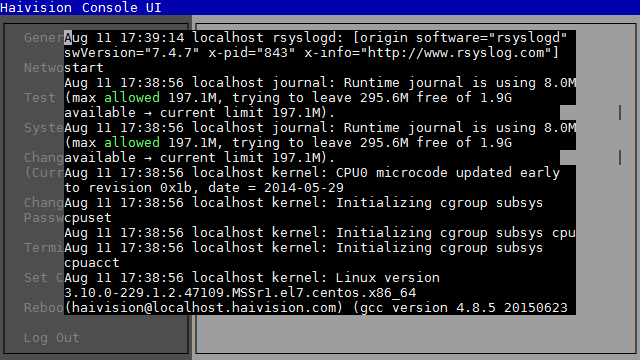Viewing System Logs
The system logs provide useful information regarding installations, packages, plug-ins, console sessions, authentications, kernel messages, and database errors.
Tip
System logs are also available via the user interface. See your user's guide for details.
To view a system log:
In the navigation sidebar, use the ↑↓ (up and down arrow) keys to highlight System Logs.
Press the Enter key. The System Logs screen provides access to various logs.
To review a particular log, use the Tab or ↑↓ (up and down arrow) keys to navigate to the log you want to view.
Press the Enter key, and the log file is displayed on the screen.

Log File Screen
When finished, press the Esc key to exit to the main screen.
System Logs
General logs include:
Haivision Log – Provides Haivision-specific log data. Not used by all Haivision devices.
Linux Messages – Provides kernel messages regarding initialization, process, commands among other things.
Upgrade Log – Provides log entries regarding installations, packages, plugins, and so forth.
Application Startup Log – Provides information regarding application startup.
Console UI Log – Provides log entries console sessions, authentications, boot protocol, and the like.
Depending on the device, there may be additional logs available (such as a product-specific or license log).
